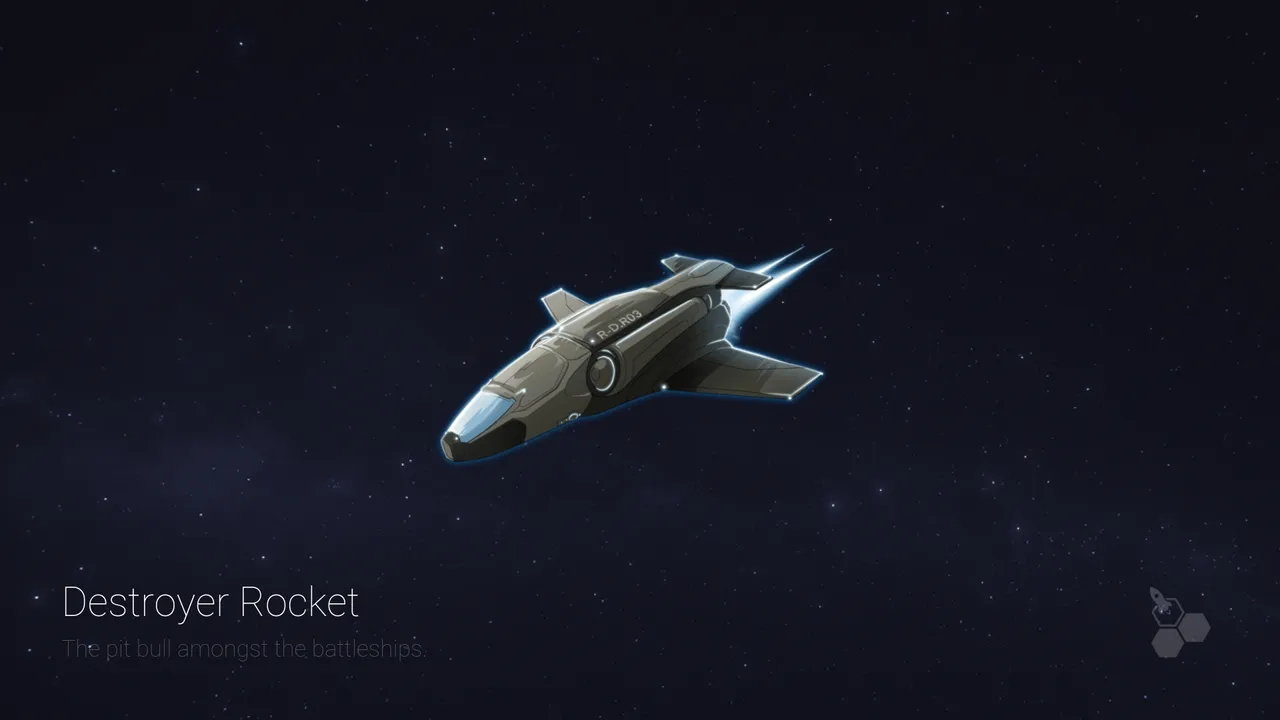
We have released the initial version of the Battle module on Saturday, 8th of June 2019 and the settlers are making use of their battleships since then. So far, 850 battle missions have been finished - what used to be a friendly peaceful universe is no longer existing anymore.
To prepare you a little better for the fights, we would like to share with you some insights today on how the battle mechanics work in detail.
When you initiate a battle, you can fly in a formation of up to 8 ship variations. Currently, we have 7 ship classes:
- Corvette
- Frigate
- Destroyer
- Cruiser
- Battlecruiser
- Carrier
- Dreadnought
For each of the ships, three different ship variations exist:
- Rocket (free to build for everybody with the relevant skill on level 20)
- Bullet (a blueprint which is available in the shop is needed for each shipyard that is supposed to build this ship)
- Laser (not yet launched but players will be able to earn/find blueprints)
So overall, there are 14 (further 7 planned) different variations of battleships plus 2 civil ships (transporter and explorer) as of now.
You can choose 1 battleship variation for every slot in your formation - ships of the same class but a different type cannot be mixed in one slot but can take different slots.
Before going into the details of the battle mechanic, there is one general remark, which may be sufficient to get the idea behind the mechanics for most players:
- Bullet type ships have an advantage against Armor
- Laser Type Ships have an advantage against Shield
- Rocket Type Ships have an advantage against Structure
But lets move a little deeper into the battle mechanics:
The Battle is round based. The first round starts with the attacker ships in the first line. All damage is first done to the first line ships of the opponent - so you can consider this is the tank position.
The amount of damage done depends on the overall attack strength of the attacking ships, which is multiplied with a factor that depends on the attack type (Bullet, Rocket or Laser) and the defense line (Shield, Armor or Structure). The following table shows the multipliers for all possible attack and defense combinations:
| . | Defense | Shield | Armor | Structure |
|---|---|---|---|---|
| Attack: | . | . | . | . |
| Rocket | . | 1 | 2 | 4 |
| Bullet | . | 1 | 4 | 2 |
| Laser | . | 4 | 2 | 1 |
The stats of all ships, in each position, are combined to one number. So, if i.e. 10 Corvette Crocus are in one slot, they will do a 20 damage rocket attack to shield (1 x 20). If however, the laser-armed Corvette Pimpernel would attack, it would cause shield damage of 80 (4 x 20).
On the opponent's side, all damage is going to be absorbed first by the combined shield of the ships in the first line position. Only once that fully depleted, the armor takes additional damage. "Piercing" is generally possible in one formation slot which means that if an attack of 20 hits a remaining shield stat of 10, 10 of the done damages goes to the armor stat. Once the armor is fully destroyed, the structure stat absorbs the additional damage.
Once the structure is affected, the number of your opponents' ships is reduced. So for example, if the initial 60 structure stat of the 10 Corvettes in the above-mentioned example is reduced to 30, means that 5 ships have been permanently destroyed. In the next turn, these ships will thus perform also a weaker attack - due to the reduced number of ships.
Once ships in one position had their attack, they have the opportunity to recover some of their previously lost shield and armor capacity. Shields are recovered initially by 20% each round while armor is repaired by 10% each round. However, the recovery rate weakens every round. Shield regeneration is lowered by 0.5 percentage points each round, while the armor repair rates are reduced by 1 percentage point each round. This means that shields do not recover anymore after 40 rounds, while armor stops recovering completely after 10 rounds. The lost structure cannot be repaired.
After both, attacker and defender, in the first line have had their attack, the battle will continue with the second line. The attacker will start again and the attack will be targeted again at the remaining ships of the opponent in the first line. Only once all ships in the first line are fully destroyed, the ships in the second line will be attacked. This means that the ships in the last slots have a much higher chance to survive than the ships in the front line.
This procedure continues for all ship lines.
Afterward, the battle continues with the first line attacker. This procedure continues until one party has lost all of its ships.
We hope that this helps you a bit to finetune your battle tactics. For a more practical exercise, however, we would suggest you using @jarunik’s battle simulator, which you can find here.
If you have any questions, join the official Discord server or use the comments below.
Are you ready for battle?
Resteem to the moon.
Stay tuned.
NextColony